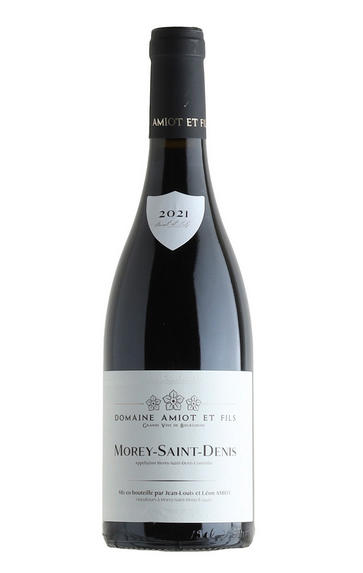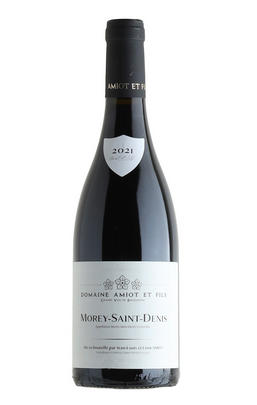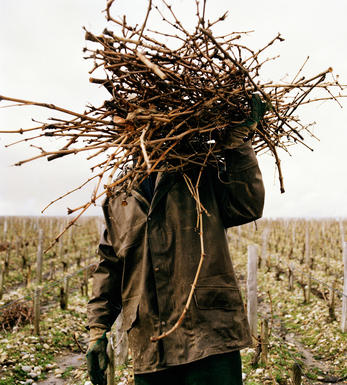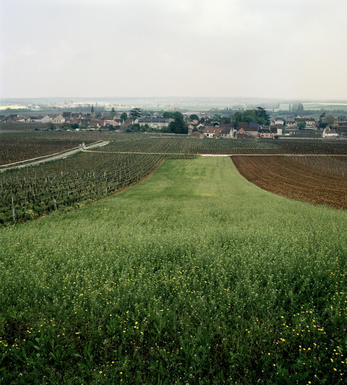
2021 Morey-St Denis, Domaine Amiot & Fils, Burgundy

About this WINE

Domaine Amiot & Fils
The Amiot family has been growing grapes in Morey-Saint-Denis for ten generations, but this is the first vintage from the brand-new Domaine Amiot et Fils. Their previous estate, Domaine Pierre Amiot, was split by brothers Dider and Jean-Louis, with the latter creating Domaine Amiot et Fils with his son Léon.
The domaine spans a dizzying 14 different appellations across just five hectares, in the villages of Morey-Saint-Denis, Chambolle-Musigny and Gevrey Chambertin. All the hard work is done in the vineyard; Léon, whose viticultural education has been extensive, is a very “hands-on” vigneron in the Burgundian sense. He dedicates his time almost exclusively to the vineyards, paying meticulous attention to his vines.
Rather than destemming, Léon retains 5 to 30% whole bunches, and carries out fermentation naturally, with indigenous yeasts. Léon also exclusively uses new oak for his Premier Crus and Grands Crus. All of this results in stylistically charming wines: perfumed, sensual, and full of powerful fruit.
No herbicides are used. Instead, the soil is ploughed or over crops are planted. Sustainability is a key focus and experiments into agroforesty and biodynamics are underway. The hope is that through these, the ecological biodiversity of the vineyards will be improved, and the environmental impact of grape growing lessened.

Morey-Saint-Denis
Morey is sometimes ignored between its two famous neighbours, Chambolle-Musigny and Gevrey-Chambertin, but its wines are of equal class, combining elegance and structure. Morey-St Denis, being that little bit less famous, can often provide excellent value.
The four main Grand Cru vineyards continue in a line from those of Gevrey-Chambertin, with Clos St Denis and Clos de la Roche the most widely available. Clos des Lambrays (almost) and Clos de Tart (entirely) are monopolies of the domains which bear the same names.
Domaine Dujac and Domaine Ponsot also make rare white wines in Morey-St Denis.
- 64 hectares of village Morey-St Denis
- 33 hectares of Premier Cru vineyards (20 in all). Best vineyards include Les Charmes, Les Millandes, Clos de la Bussière, Les Monts Luisants
- 40 hectares of Grand Cru vineyard. Clos de Tart, Clos des Lambrays, Clos de la Roche, Clos St Denis and a tiny part of Bonnes Mares
- Recommended Producers: Dujac, Ponsot, Clos de Tart, Domaine des Lambrays

Pinot Noir
Pinot Noir is probably the most frustrating, and at times infuriating, wine grape in the world. However when it is successful, it can produce some of the most sublime wines known to man. This thin-skinned grape which grows in small, tight bunches performs well on well-drained, deepish limestone based subsoils as are found on Burgundy's Côte d'Or.
Pinot Noir is more susceptible than other varieties to over cropping - concentration and varietal character disappear rapidly if yields are excessive and yields as little as 25hl/ha are the norm for some climats of the Côte d`Or.
Because of the thinness of the skins, Pinot Noir wines are lighter in colour, body and tannins. However the best wines have grip, complexity and an intensity of fruit seldom found in wine from other grapes. Young Pinot Noir can smell almost sweet, redolent with freshly crushed raspberries, cherries and redcurrants. When mature, the best wines develop a sensuous, silky mouth feel with the fruit flavours deepening and gamey "sous-bois" nuances emerging.
The best examples are still found in Burgundy, although Pinot Noir`s key role in Champagne should not be forgotten. It is grown throughout the world with notable success in the Carneros and Russian River Valley districts of California, and the Martinborough and Central Otago regions of New Zealand.


Buying options
Add to wishlist
wine at a glance
Delivery and quality guarantee